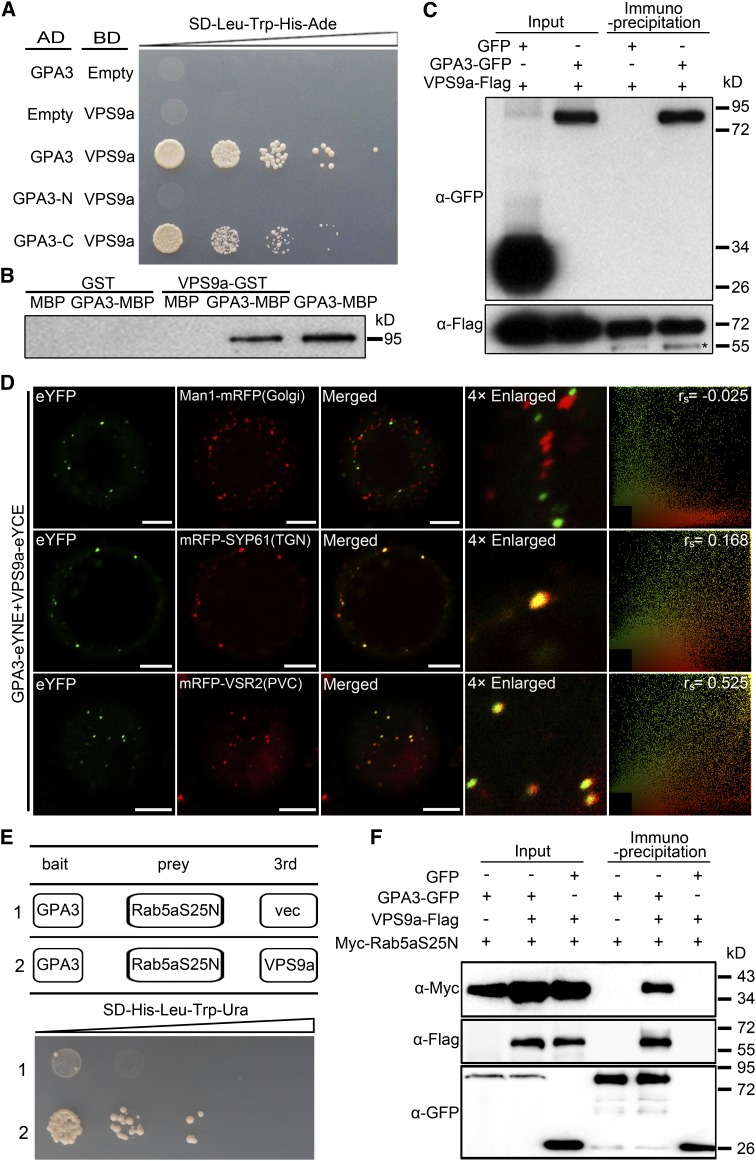Figure 6.
GPA3 Physically Interacts with Rice Rab5a via Its GEF VPS9a.
(A) Y2H assay showing that both the full-length GPA3 and GPA3-C (containing the C-terminal 216 amino acids of GPA3) interact with VPS9a, while GPA3-N (denotes the truncated gpa3 protein in the gpa3 mutant, which loses the C-terminal 216 amino acids of GPA3) fails to interact with VPS9a.
(B) In vitro GST pull-down assay showing that VPS9a-GST, but not GST itself, pulls down GPA3-MBP.
(C) In vivo CoIP assay showing that GPA3-GFP can be coimmunoprecipitated in the total leaf extract of N. benthamiana with anti-Flag agarose beads. The left two lanes show the protein immunoblots of an input control with anti-GFP and anti-Flag antibodies. The right two lanes show the results of CoIP. The asterisk indicates the IgG heavy chain.
(D) BiFC assay showing that GPA3 can interact with VPS9a in TGN and PVC in leaf epidermal cells of N. benthamiana. PSC coefficients (rs) between eYFP and each marker are shown in the right panel. Bars = 10 μm.
(E) Yeast three-hybrid assay showing that GPA3 interacts with Rab5aS25N in the presence of VPS9a. Ura, uracil.
(F) In vivo CoIP assay showing that Myc-Rab5aS25N can be coimmunoprecipitated in the presence of the VPS9a-Flag fusion in the total leaf extract of N. benthamiana with anti-GFP agarose beads.

